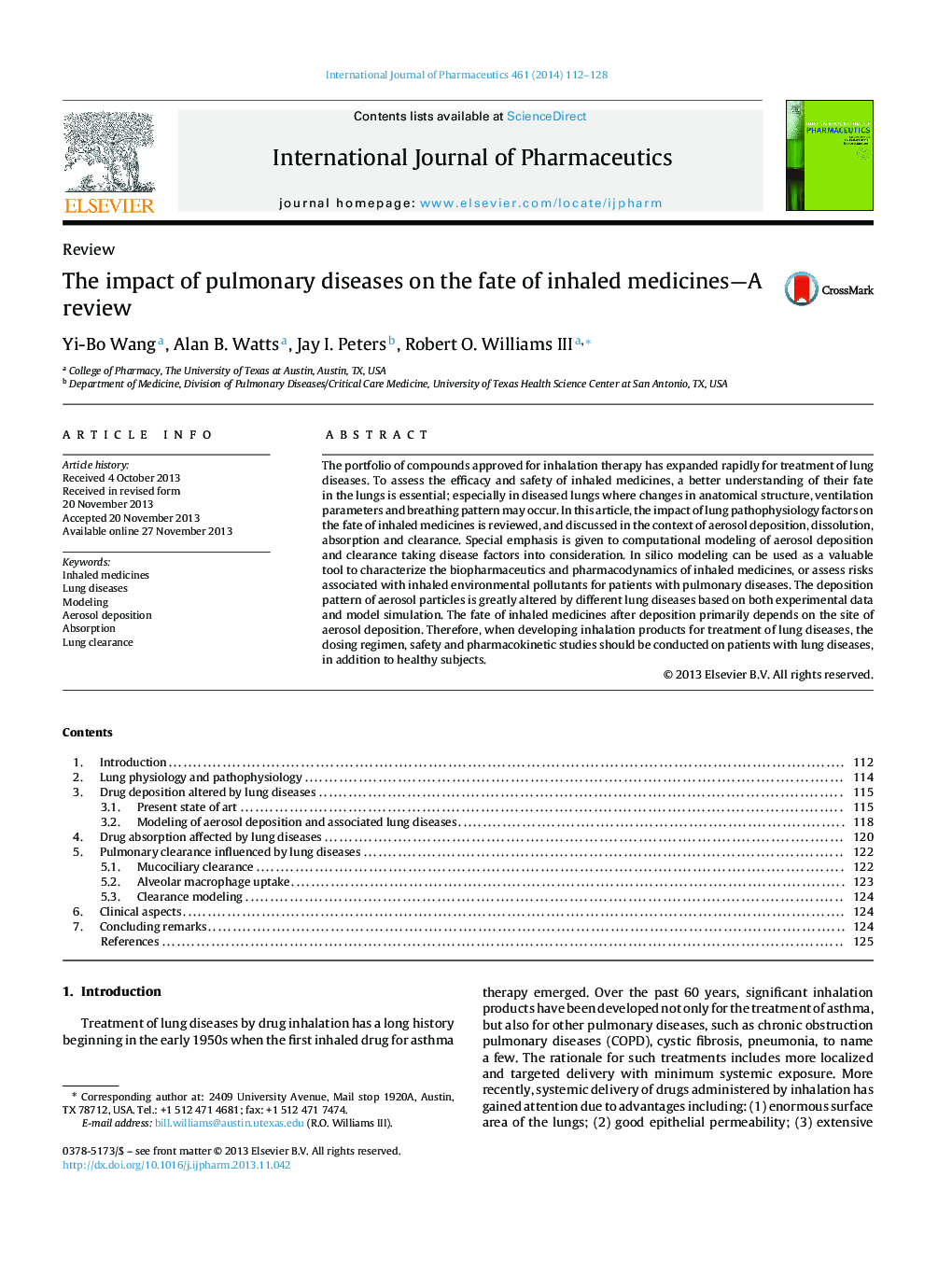| Article ID | Journal | Published Year | Pages | File Type |
|---|---|---|---|---|
| 2501911 | International Journal of Pharmaceutics | 2014 | 17 Pages |
The portfolio of compounds approved for inhalation therapy has expanded rapidly for treatment of lung diseases. To assess the efficacy and safety of inhaled medicines, a better understanding of their fate in the lungs is essential; especially in diseased lungs where changes in anatomical structure, ventilation parameters and breathing pattern may occur. In this article, the impact of lung pathophysiology factors on the fate of inhaled medicines is reviewed, and discussed in the context of aerosol deposition, dissolution, absorption and clearance. Special emphasis is given to computational modeling of aerosol deposition and clearance taking disease factors into consideration. In silico modeling can be used as a valuable tool to characterize the biopharmaceutics and pharmacodynamics of inhaled medicines, or assess risks associated with inhaled environmental pollutants for patients with pulmonary diseases. The deposition pattern of aerosol particles is greatly altered by different lung diseases based on both experimental data and model simulation. The fate of inhaled medicines after deposition primarily depends on the site of aerosol deposition. Therefore, when developing inhalation products for treatment of lung diseases, the dosing regimen, safety and pharmacokinetic studies should be conducted on patients with lung diseases, in addition to healthy subjects.
Graphical abstractFigure optionsDownload full-size imageDownload high-quality image (135 K)Download as PowerPoint slide
